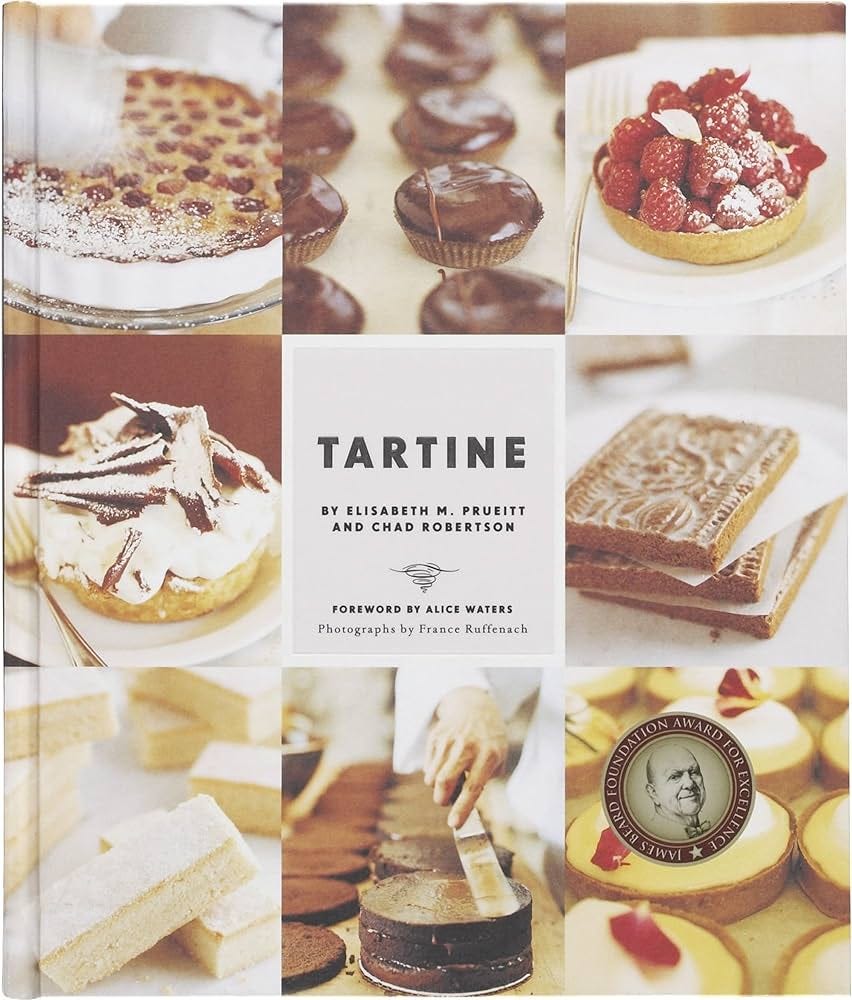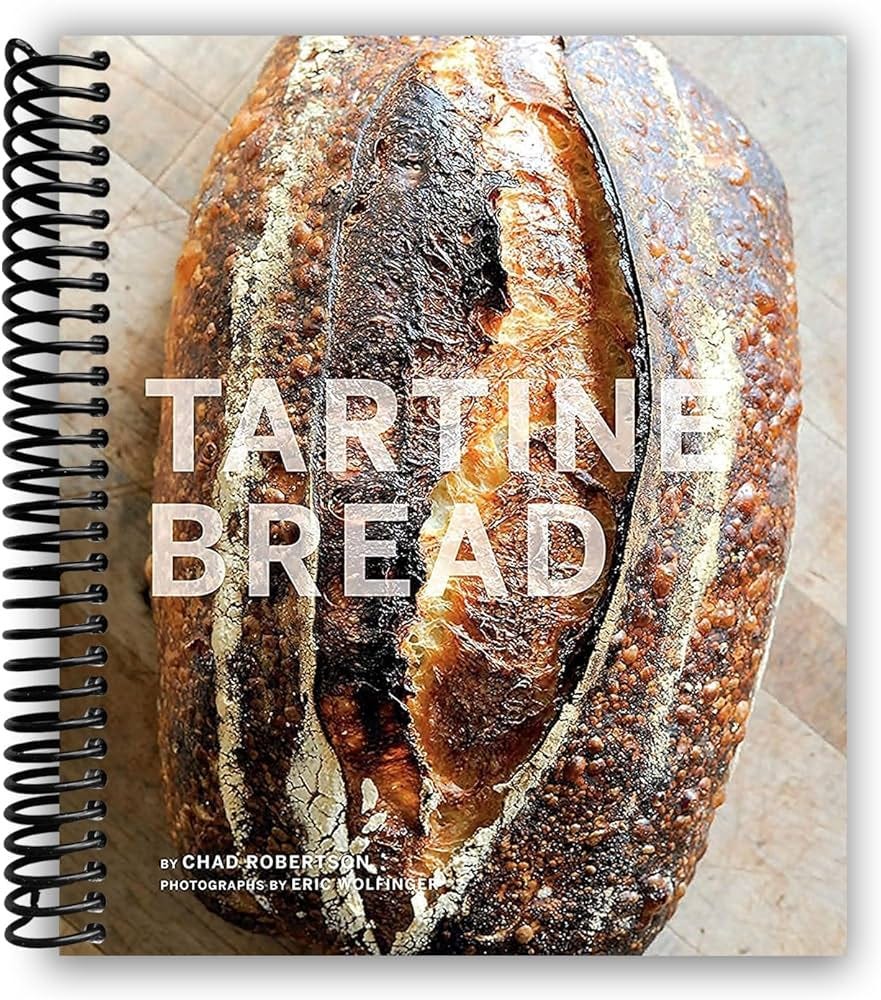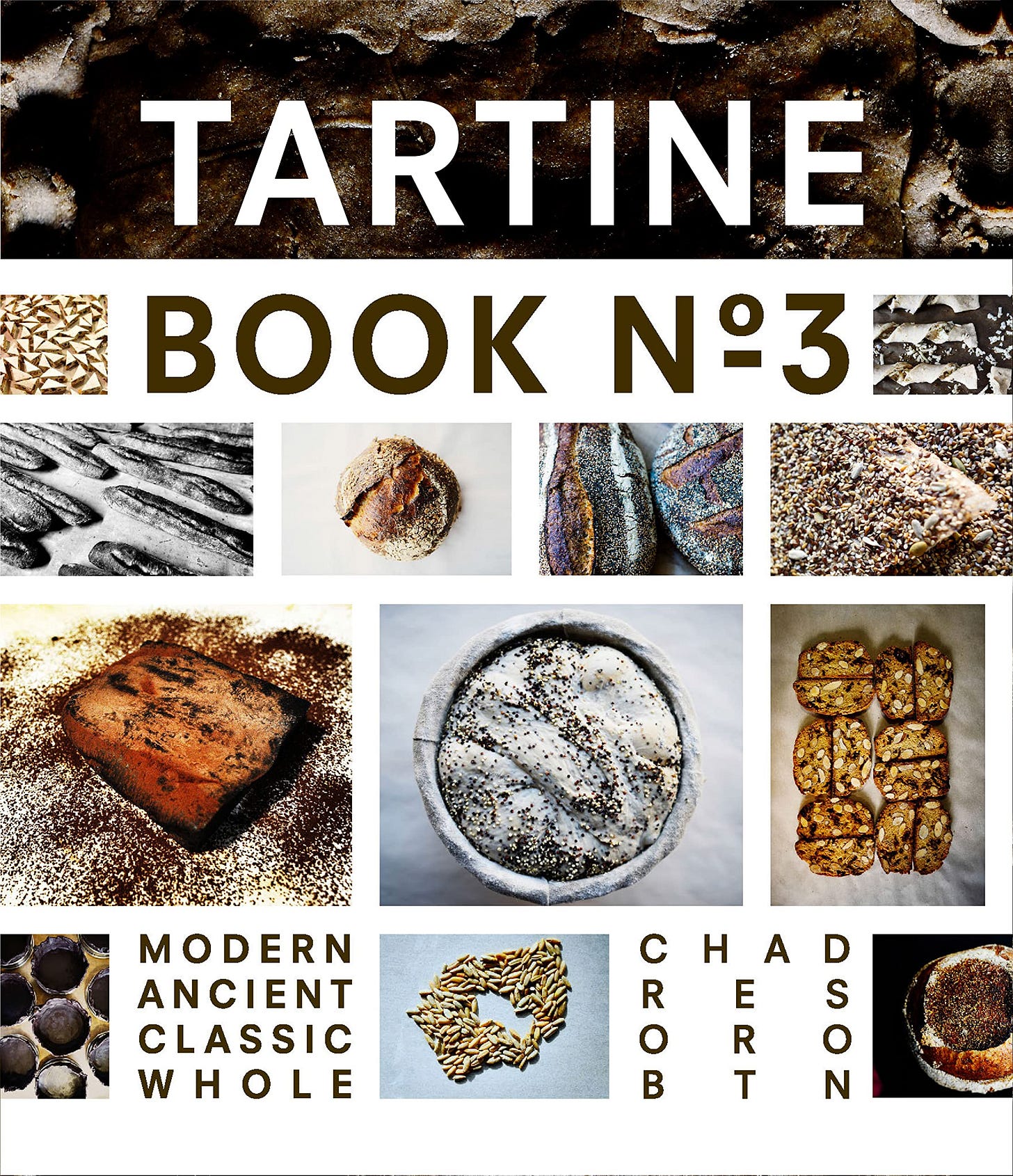My Books
Tartine
(2006)
Six months after opening Tartine on that corner in the Mission, there was serious concern that we wouldn’t make it past the first year. We had a wonderfully talented, dedicated team and the strongest sort of neighborhood support we could ever hope for. I also had to clear encampments out of the doorways most early mornings to get into work. It was our first substantial retail operation after years of baking exclusively for Farmers Markets and neighborhood grocers. San Francisco was a huge stage for us after years working solo in our tiny village bakery on the coast north of the city. We wanted to bring the best of what we loved to our new community. In the beginning, it was just too ambitious: the menu was too complex and required an army to execute and operate. Of course, only the finest ingredients would suffice and we hadn’t yet learned just how to balance substantial labor with food cost, along with legions of unknowns facing first time retail business owners.
After a radical exercise in simplification and focus, the math started to work. Liz Prueitt did the heavy lifting writing this book. One of us had to keep managing the bakery, and one of us had to get this book written. At the time, I was still the sole bread producer and had help on viennoiserie only part time so it was 7 days for me during those years with little time outside of that corner.
The book was photographed by France Ruffenach on a medium format Hasselblad film camera and styled by Liz and our team. It all came together beautifully in the end. And thankfully, several years later - as the look and style of our baking (specifically pushing the maillard reaction) influenced the mainstream, customers stopped asking why we always burn our croissants.
Tartine Bread
(2010)
We were nominated for JBF awards in 2006 and 2007. Back then there was no baking or bakery category, just outstanding pastry chef so that’s where we landed. They also never published the preliminary long list of potential nominees back then, so when the short list came out that was it. The ceremony was held in NYC at Lincoln Center. It was beyond fabulous, especially for a kid who grew up in West Texas. Each year, the awards were an excuse for us to re-up our full Dries evening wear and celebrate our colleagues from around the country. Often compared to the Oscars, it was always an honor to be nominated amongst such accomplished peers, but winning was bittersweet. Once you win, you can’t repeat in that category again. We didn’t win in 2006, but our daughter was born in NYC later that week (not quite as planned) and we stayed for an extended period before returning back to the West Coast. The shift of uncertainty was a powerful call to action for me - it was time for me to make the bread book.
After a few weeks, I returned to California to work, while Liz stayed in NYC until all was well and safe to return to the West Coast. There was a young apprentice working on bread with me at the time named Eric Wolfinger. Not yet the world renowned globe trotting food photographer of the following years, Eric showed up at the bakery literally wet behind the ears from dawn patrol surf every morning at Ocean Beach. He had a buzz cut fashioned by himself, fresh out of college with a couple of short lived cooking stints under his belt. After several months working most all of the various positions around the bakery including a few masterful weeks covering dish duty, he finally arrived at the bread shift working with me. Eric had a serious photography side hussle and he was a natural talent who knew how to cook and what well made food should look like. He also lived upstairs in the apartment above the bakery. Most cookbooks then were photographed over a period of several days or a couple of weeks, while it may take 18 months or more to finish the book. Bread is never so predictable, at least the way we were making it in those days, so I knew I wanted a photographer to shoot throughout the whole process of making the book so we could be sure to capture the most aspirational loaves when they chose to grace us with their presence. It helps when your photographer lives upstairs; and when you are both so finely tuned with each other from surfing mornings and making bread in the afternoons together. Far from smooth and easy though, the process was beyond arduous. The deeper we went, the more personal, challenging, and ultimately life changing it became for both of us. Eric taught me to surf, which shifted my perception and priorities to this day in profound ways. Tartine Bread had legs - we made something useful for people around the world, and I’m super proud of that. In 2008, Eric and I were in early stages planning the bread book. That year, Liz and I were nominated again for JBF award, and accepted the award on stage at Lincoln Center with my daughter in my arms.
Tartine Book No. 3: Modern Ancient Classic Whole
(2013)
TB3 was a different type of journey. The 2010s was an interesting time in the culinary world. San Francisco was changing with the tech transformation, but in the early part there were still lots of artists living in the Mission and the creative forces were flowing. Locally, and globally - chefs were blurring the lines between regional and culturally defined cuisine and types of cooking. While it sometimes seemed like a sort of post fusion food movement, over time it became clear that chefs were just digging deeper into their ingredients - essentially expanding the pantry and with it the possibilities. In the Bay Area, brassicas were becoming a thing and Italian heirloom varieties of all sorts started showing up at farmers markets and on local menus. I had noticed a similar thing several years before with wild stinging nettles. Once a mysterious foraged ingredient used only by a handful of visionary farmers and creative chefs, over time I started to see the verdant medicinal plants at farmers markets and on my favorite menus around town. Restaurants like Noma in Copenhagen were crafting a singular Danish style defined solely by the most fanatical local sourcing and careful transformation of ingredients using many ancient techniques like fermentation and live fire cooking supported by a culinary lab using some of the most advanced scientific equipment applied to food. While influential Bay Area pioneers like Chez Panisse had always focused on ingredients, relationship sourcing, and celebrating a certain warm abundance of southern French lifestyle through food, this interesting time welcomed an era of post regionalism supplanted by an even more local focus. Working primarily as a baker with bread at that time, I looked at all my chef friends cooking with diverse varieties of carrots and tomatoes and brassicas, special breeds of beef and pork and chicken, amazing formerly bycatch fish that had never before made it onto a restaurant plate, and as a chef-baker : serious food FOMO set in.
Book 3 was about exploring the diversity of grains in variety, technique, and uses; with the goal of expanding the bakers pantry in the way that had been happening in the savory cooking world. When I was a kid, a carrot was just a carrot, and we had white flour and wheat flour. If you had eastern european heritage, maybe some rye flour in the cupboard. Ideas and inspiration came from all directions. There was a very strong team working with me at the time and creativity flowed freely. We had recently installed a small bread oven in our restaurant Bar Tartine a couple of blocks from the original bakery on Guerrero. Bar Tartine was entering its final and most creative iteration under the chef team of Balla and Burns - a trailblazing post regional situation all its own (more on that later). TB3 was produced mostly in the Bar Tartine space among dozens of ongoing wild fermentation projects, cheese making, whole animal butchery, curing, aging, and dehydrating around the clock. There was so much continuous creation happening that a different sort of FOMO began to set in. Anxiety that techniques and discoveries were getting lost in the avalanche and needed to be documented. Somewhere in the midst of making TB3, we started to lay the groundwork for the next book where I’d attempt to photo document the fascinating work of Balla and Burns to the best of my ability. Looking back, on the one hand there was a certain self indulgence in all this creative output, but the work was so challenging - days and nights blurred into weeks and months. I’m not sure there was any other way it could have happened.
My friend Julliette Cezzar - who I first worked with on Book 3 was a director of design and communication at Parsons in NY at the time. When I wasn’t creating content with my team in SF, I was in NY a week every other month to build the design and layout with Juliettte. At the heart, this book was about collaboration. Inspired by my collaborative work with chefs around the world, Pastry and bread collaboration with Pellicano and Hart; editorial with Battilana, and design language with Juliette. It was the most intense period of learning in my culinary life, and left me with the realization that collaboration is my life’s blood.




